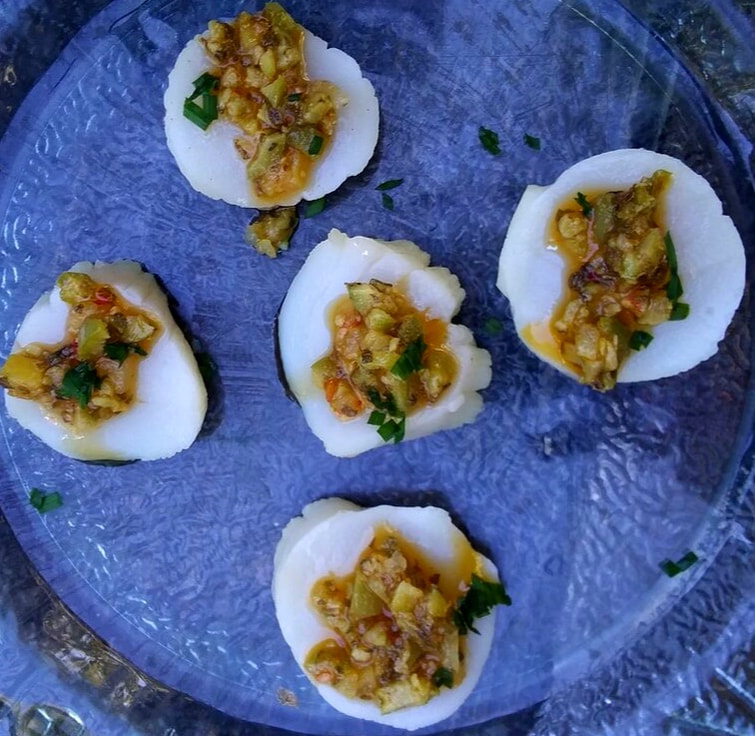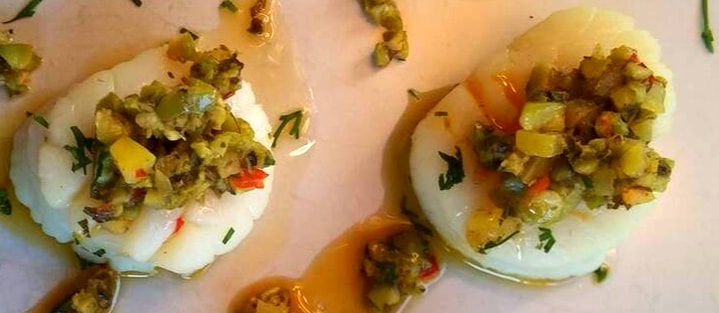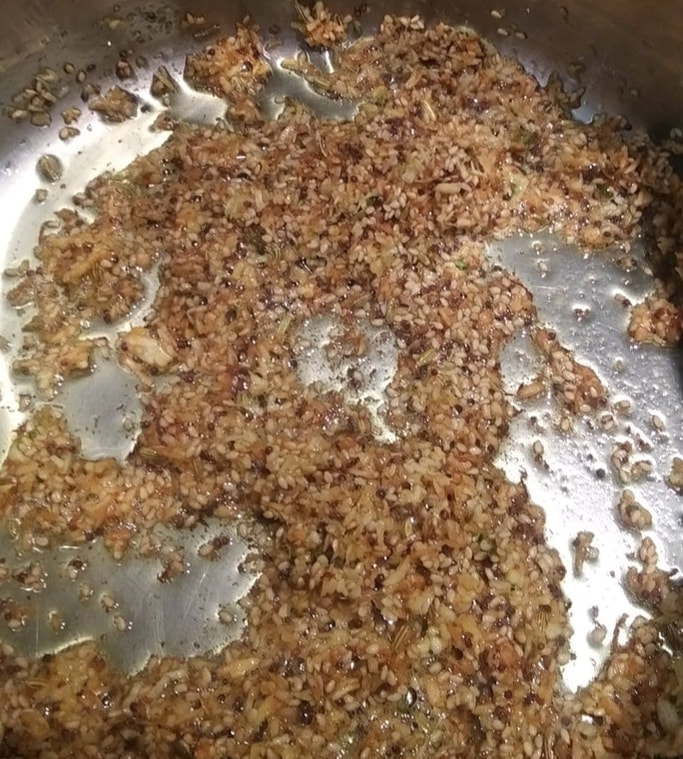When the summer’s sun casts down upon your body, and you are sweating and craving something to cool yet awaken you to the ecstatic mystery of flavor, make this dish. Poached scallops are a quick protein to prepare, and as long as they are fresh, their softness will sing to this mouth-igniting sauce. Castelvetrano olives’ briny base and floral fresh oregano’s floral hint temper the bright umami of preserved lemons and fermented Calabrian chili peppers. This sauce contrasts with the mellow scallop flavor to leave your mouth so spinning it will cool down your summer-fevered body.
If you do not have your own fish stock handy, you can make your own with almost any white fish bones, a bay leaf, fresh parsley, a touch of white wine, and water. Of course in most grocery or fish stores now you can find stock prepared for you. You can purchase Calabrian peppers online through numerous stores, but the only brand I am familiar with is Tutto Calabria. If you cannot procure the Calabrian peppers in time, you can use Jalapeno or Serrano peppers to taste. Preserved lemons are also now widely available in many supermarkets and online. I prefer to make my own preserved lemons and recommend Paula Wolfert’s recipe in The Slow Mediterranean Cookbook. If you wish to use an online recipe, this recipe basically is Wolfert’s preserved lemon recipe: https://cooking.nytimes.com/recipes/1016212-preserved-lemons . It can take several weeks to prepare the lemons, so if you decide to make your own, you will want to prepare ahead. While Caper leaves are harder to come by, you can find them in gourmet or Italian markets, as well as online through a variety of retailers. If you cannot find caper leaves, you can use the same amount of capers.
While the sauce is designed to fit this scallop dish, you can use it on a variety of proteins such as any white fish, salmon, roasted chicken or pork, poached eggs, or grilled tofu.
Sauce:
2 tablespoons preserved lemons, rinsed, removed of flesh, and small diced the skin
4 tablespoons Castelvetrano olives, rinsed and small diced
1 tablespoon fresh oregano, chopped
½ teaspoon Calabrian hot pepper, minced (or a minced Jalapeno)
½ teaspoon caper leaves, chopped (or capers)
4 tablespoons extra virgin olive oil
Pinch of sea salt
1. Place all of the ingredients in a small saucepan.
2. On low heat, slowly heat the mixture until it comes to a slow simmer and blooms out fragrance, then pull from the heat to rest. This should only take about 2 minutes.
3. Serve the sauce at room temperature over poached scallops.
Poached Scallops:
4 cups of fish broth/fume
5 sprigs of thyme
1 pound sea scallops
Sea salt, enough to make the poaching liquid salty like the sea
1. Place the fish broth, thyme, and salt in a shallow stockpot.
2. Bring the broth up to a slow simmer.
3. Add in the scallops and cook them for about 2.5-3 minutes, or until medium-rare.
4. Pull the scallops from the liquid with a slotted spoon or strainer.
5. Lay the scallops out in an even layer on a plate covered with unbleached paper towels.
6. Place the scallops in the refrigerator to cool.
7. Serve the scallops on individual plates, about 3-4 per person, and top with the preserved lemon sauce. Garnish with a pinch of fresh herbs, like parsley, basil, or dill.
8. Save the fish stock by placing it in a glass container and freezing it.





 RSS Feed
RSS Feed